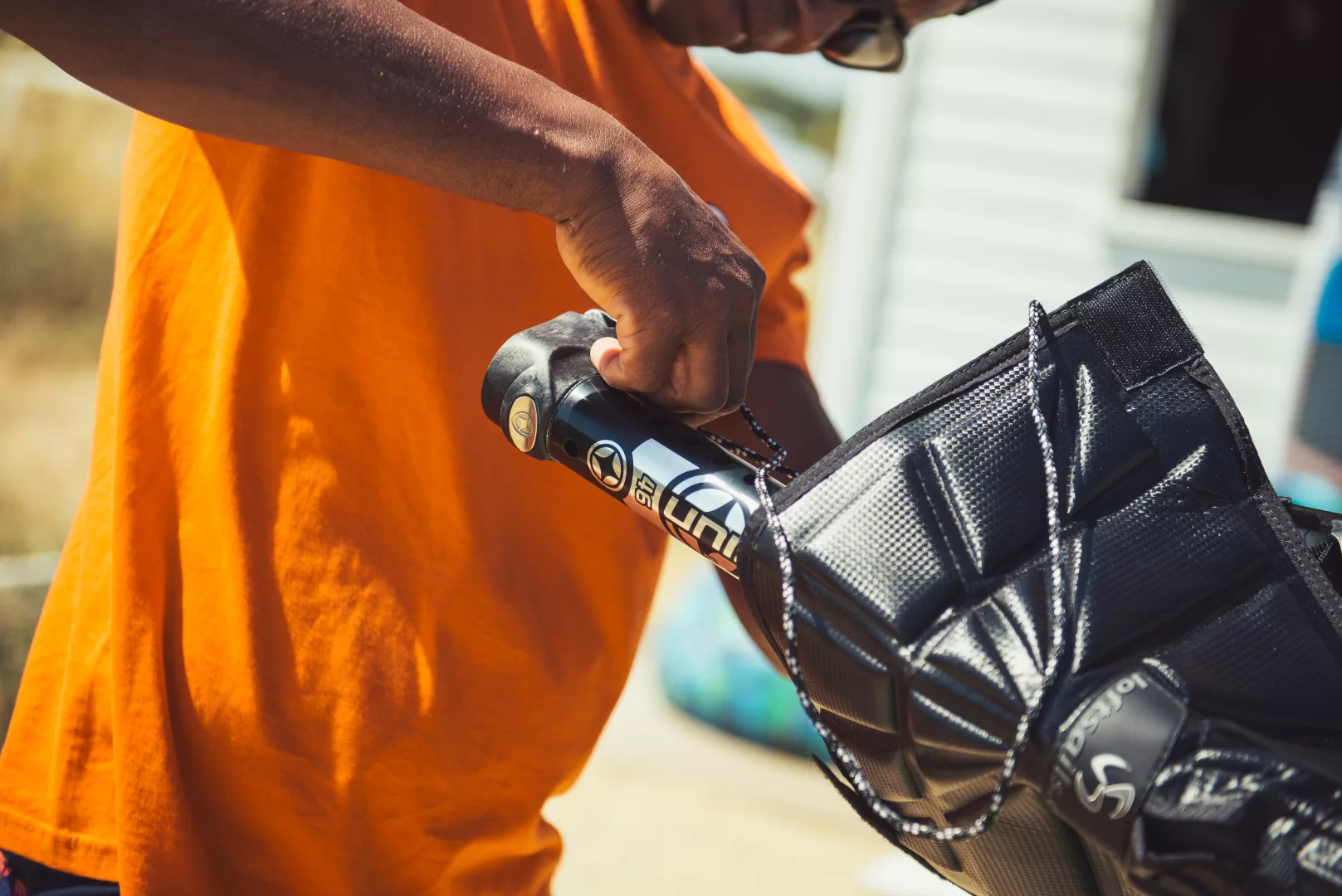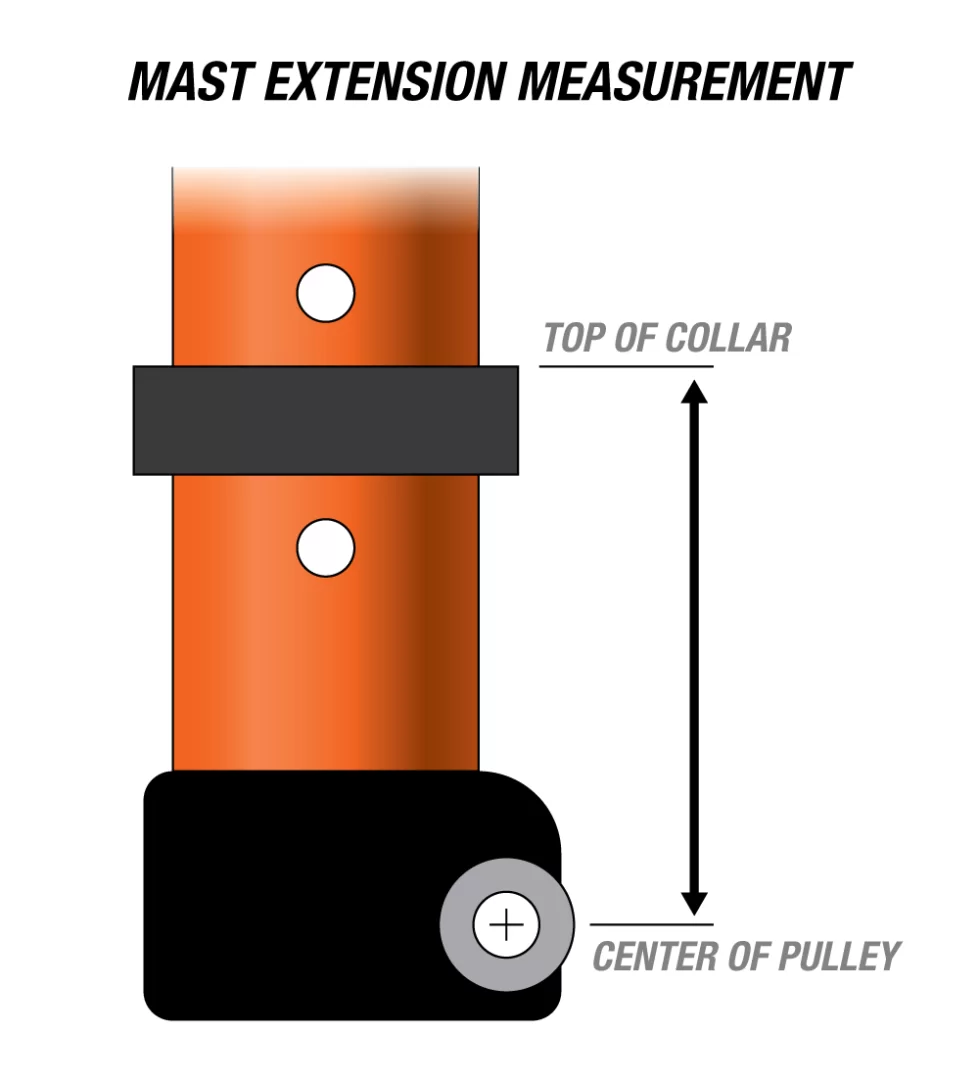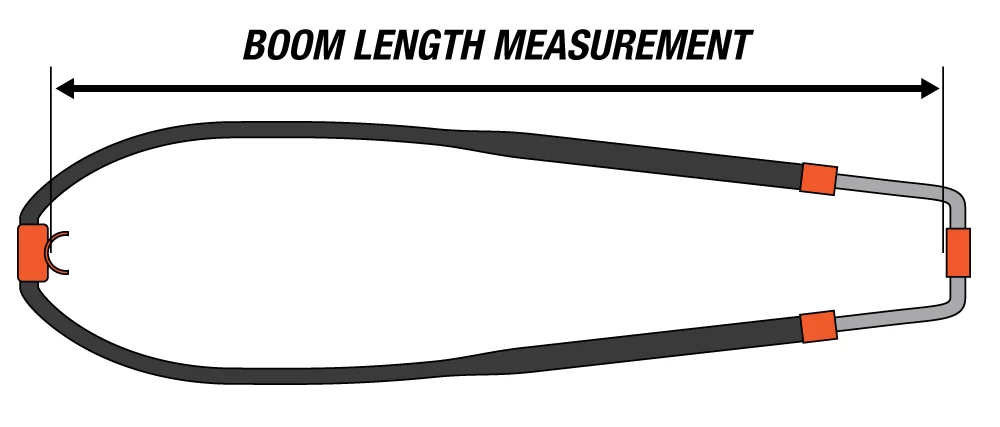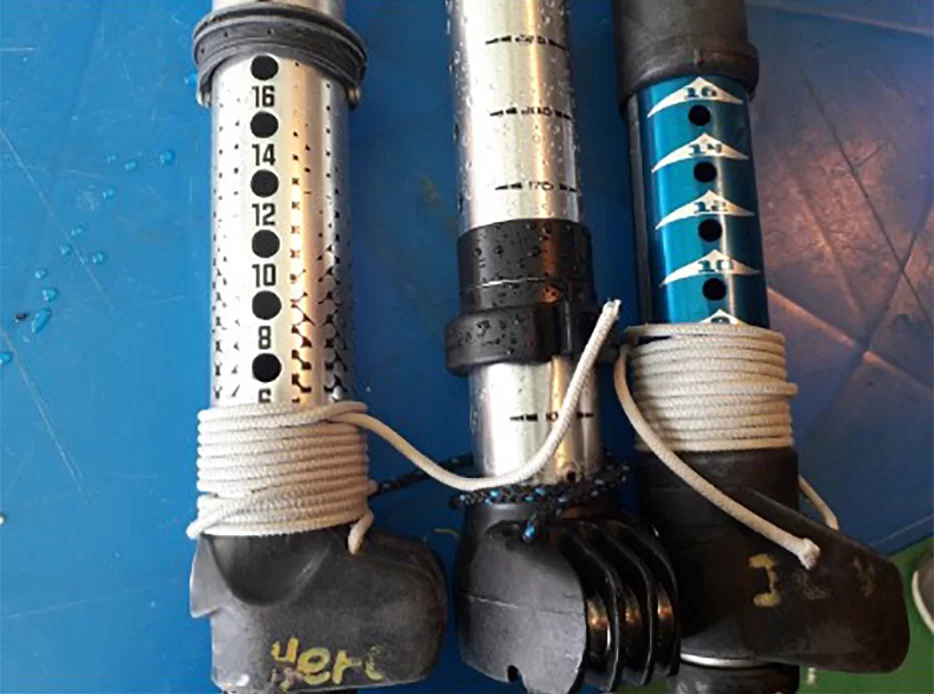Why you cannot blindly follow equipment specs
A familiar situation for many windsurfers: you are anxious to get out on the water, you perfectly rig your gear according to the specs printed on the sail, but... still... the sail looks or feels... odd! Did you do something wrong?
The truth is that you are not entirely to blame. The only mistake that you made was to blindly follow the specs printed on the gear. On this page we explain why those specs are not always correct and how you can work around this.

Where does it go wrong?
There are three factors at play within this problem:
- Language
- Production
- Sail wear
We will talk you through these points one by one.
Not all brands speak the same language
The gear of most windsurfers consist of a mix of multiple brands. And each brand may have his own definition of the necessary mast extension and boom length. For example, do you measure the boom length from 'top to toe', or from the inside of the boomhead to the inside of the outhaul?
These are, in our opinion, the most workable and consistent definitions for mast extension and boom length:
Mast extension:
From the centre of the pulley to the top of the collar.

Boom length:
From the inside of the boomhead (frontside of the mast) to the inside of the outhaul.

Inconsistencies in production
There are several factories that produce windsurf gear and each factory has its own rules and production techniques. The various Unifiber mast extension models alone are produced at three different factories. This can lead to inconsistencies in the extension scale.
For example, each model mast extension has its own minimum length. This doesn’t always match convenient numbers. It’s easiest to work with even numbers or multiplications of 5 or 2.5. So we choose the number that comes closest.
Masts are not always perfectly the right size. During our extensive mast measurements, we found masts that are up to 2cm longer than they should be. For example a 400 mast being 402cm.
And sometimes manufacturers make a mistake. It’s our job to keep checking this, but sometimes a mistake slips through.

Sail wear
Due to the extreme downhaul tension, windsurf sails will stretch out over time. If your sail is relatively new, this stretch is negligible. But after a couple of years it might significantly influence your sail trim.
Dacron sails are known to suffer from stretch. You might need up to 5cm extra extension on an old dacron sail!
What to do?
The conclusion of this story:
In most cases you can stick to the specs supplied by your sail brand, but always check for yourself and use the trim that offers best performance on the water.
The most important indicator for sail trim are the amount of leech tension (how loose the leech is) and the amount of batten rotation (if they touch the mast and/or how much they rotate round it).
Watch Loftsails sail designer Monty Spindler and our team rider Diony Guadagnino talk about sail trim / tuning in these videos: